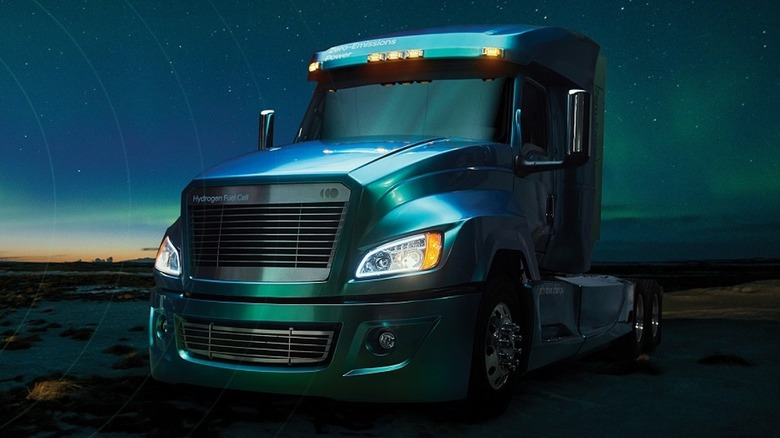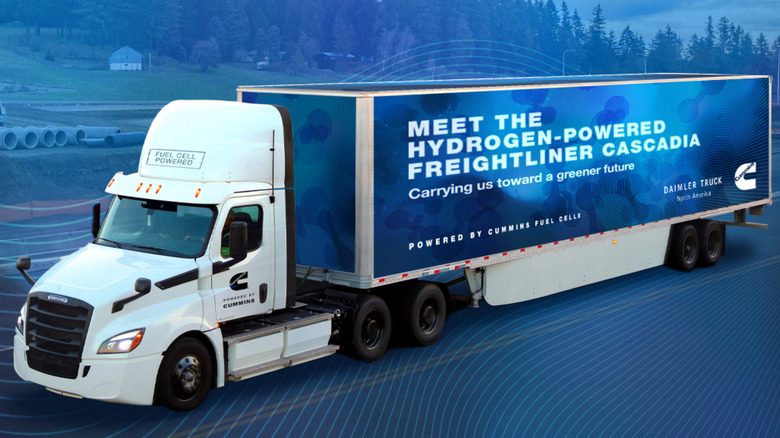Cummins Is Experimenting With A Hydrogen Engine And It's Powering This Popular Semi-Truck
Cummins is experimenting with a hydrogen powertrain that provides power for a popular semi-truck. The powertrain in question actually uses a hydrogen fuel cell, which generates electricity that can then power an electric motor to propel the semi-truck down the road, similar to the setup that current hydrogen-powered passenger vehicles use.
This makes a hydrogen fuel cell electric vehicle somewhat similar to a battery electric vehicle, with an electric motor providing the motive power for both. The major differencefor large heavy-duty over-the-road trucks is that the FCEV does not require a huge battery to power its motor.
Unfortunately, such a large battery would reduce the truck's normal payload and capacity, while the need to charge many times on a long road trip would add significantly to a heavy-duty BEV truck's travel time, assuming there's an adequate charging infrastructure. This continues to be the biggest challenge for EVs.
The FCEV simply replaces the diesel engine with a fuel cell, and then adds an electric motor. This gives the heavy-duty FCEV truck a longer range than a BEV, with fewer, quicker stops and greater cargo capacity. BEV powertrains tend to work just fine for local or regional delivery, garbage, and recycling trucks that operate out of a central facility and can charge at the end of a shift.
Long-distance hauling of heavy loads is more suited to hydrogen power, once a suitable refueling infrastructure exists — we are waiting on that as well. The popular Class 8 semi-truck that uses the Cummins hydrogen powertrain is the Freightliner Cascadia.
What else should you know about the Cummins hydrogen engine in the Freightliner Cascadia?
The Freightliner Cascadia is produced by Daimler Truck North America (DTNA), who owns Freightliner Trucks and is North America's biggest producer of heavy-duty trucks. These Freightliner Cascadia trucks will be fitted with Cummins' fourth-generation fuel cell and its powertrain, which, in Cummins' and DTNA's words, "...provides improved power density, efficiency and durability."
The primary objective of this collaborative effort between Cummins and Freightliner is to provide a heavy-duty trucking solution that enables zero-emission transportation that is not only feasible in a technical sense, but is also an economically viable option for those who purchase and operate these trucks.
The current Freightliner Cascadia was unveiled by DTNA in October of 2024, and became available to order in April of 2025. Compared to the fourth-generation Cascadia, the new model has been aerodynamically enhanced for improved fuel economy, and also upgraded inside the cab for greater driver comfort.
Standard equipment on the Freightliner Cascadia includes full automatic emergency braking, adaptive cruise control down to 0 mph, lane departure warning, a forward facing camera, intelligent LED headlights with automatic defogging and deicing, a five-inch gauge cluster screen, a seven-inch touchscreen infotainment system with Apple Carplay and Android Auto, heated side mirrors with power adjustment, and more. Some options on the Cascadia include a safety panic button in the sleeper, and a driver's lounge package with a Murphy bed and a dinette table.

